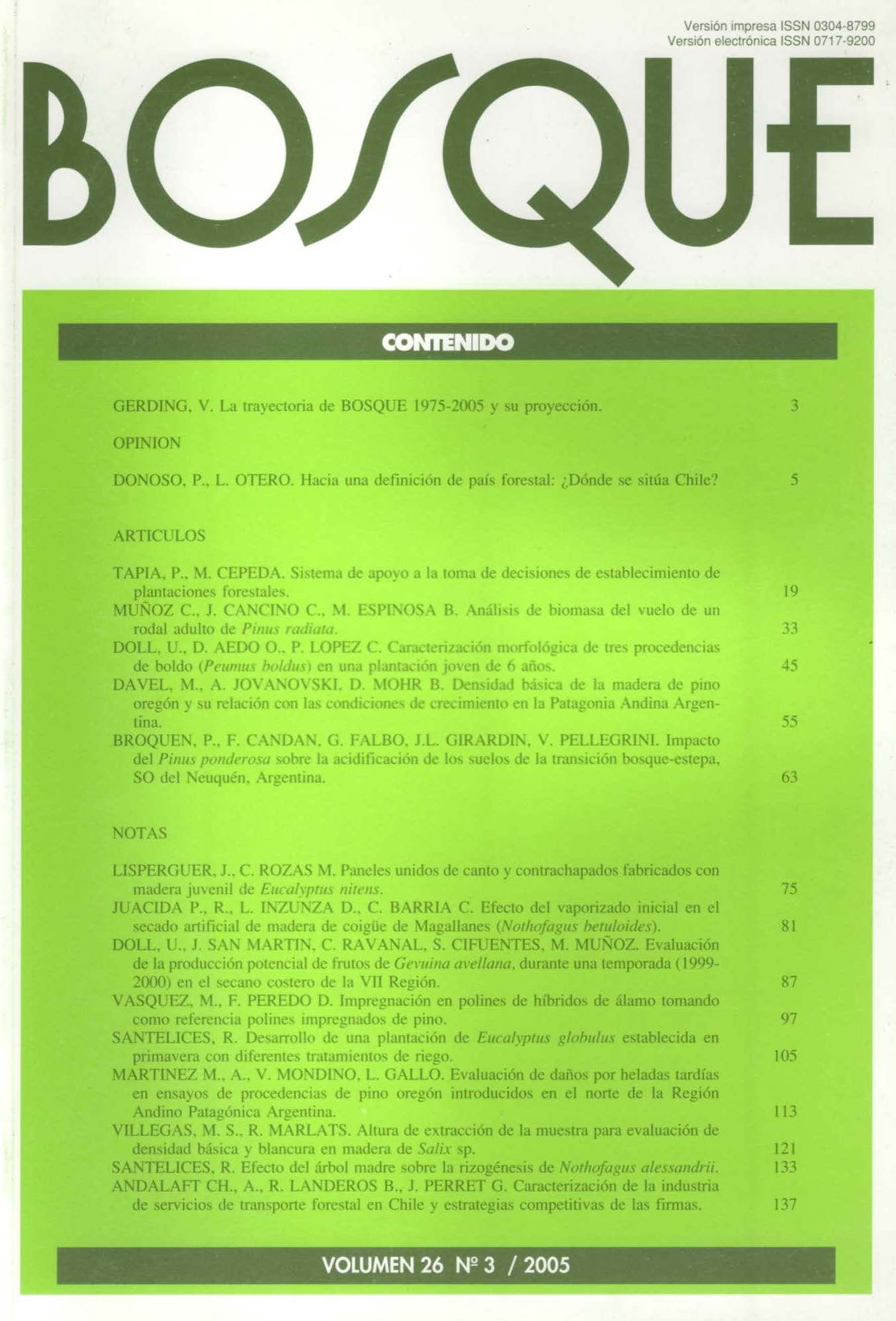Towards a definition of a forest country: Where is Chile located?
Main Article Content
Abstract
Since the arrival of Spaniards, Chile has had great changes in its forestry landscape, mainly during the 19th century. Land clearance for cattle and agriculture was originally the main cause of forest losses. The period of indiscriminate destruction of forests corresponds to the first stage of “Exploitation” of the forest resources according to the classification by Kimmins to describe the degree of forest development. In Chile this stage ended with the last great destruction of forests in Aysén, during the middle part of the 20th century. According to Kimmins the first stage is followed by one of “Regulation”, which is characterized by the creation of political and legal mechanisms to control forest harvest. Chile enters this stage, through state initiatives, with the creation of the institutional and industrial bases, by the creating the Corporación Nacional Forestal (Chilean Forest Service), the INFOR (Forest Research Institute), and the pulp mills Arauco and Constitución. The third stage corresponds to that of “Sustainable Forest Management”, in which there is a sustained provision of goods and services from the forest. In this article our objective is to conduct a critical analysis to determine whether Chile has reached this stage of development, and for that purpose we established three requisites that Chile should fulfill to consider itself a developed nation from a forestry perspective: a) a great proportion of the population must improve their quality of life through the goods and services provided by the forests; b) strong public and private institutions should safeguard the good management of plantations and native forests, and; c) plantations and native forests are carefully managed so as to conserve or improve their biodiversity, productivity and the ecosystem services that they can provide. Through our analysis we conclude that these conditions are not met in Chile, and the pending challenge is to move the Chilean forest model towards greater levels of sustainability, particularly in social and environmental matters, in order become a nation with a truly developed forest sector.

